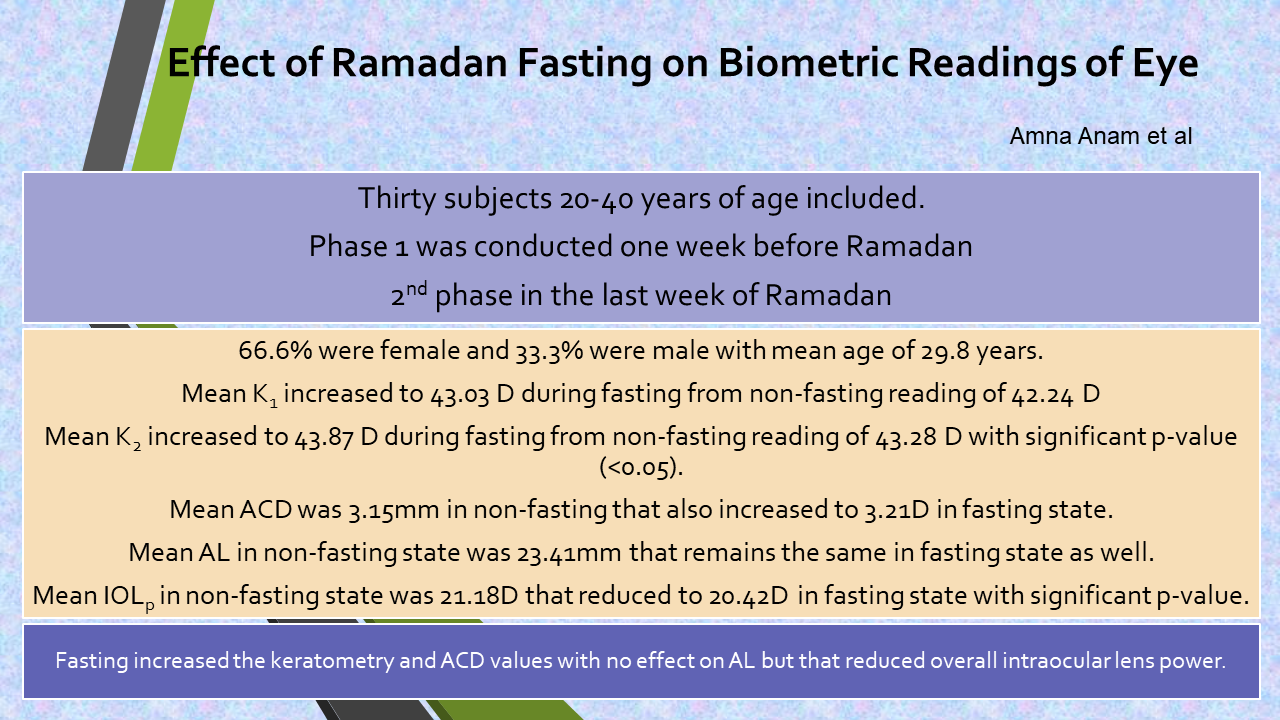Effect of Ramadan Fasting on Biometric Readings of Eye
Doi: 10.36351/pjo.v40i3.1508
DOI:
https://doi.org/10.36351/pjo.v40i3.1508Abstract
Purpose: To determine change in biometric values of eye after fasting and to elucidate whether this change is significant enough to delay the refractive and cataract surgeries during fasting.
Study Design: Cross sectional observational.
Place and Duration of Study: Eye department, DHQ-UTH, Gujranwala, from April 2021 to May 2021.
Methods: Thirty subjects of either gender between 20-40 years of age who participated in both phases were enrolled in this study. Phase 1 was conducted one week before Ramadan and 2nd phase in the last week of Ramadan. After routine ophthalmic examination, keratometric(K) values were obtained with Auto Ref-Keratometer (Canon), while Axial length (AL), Anterior chamber depth (ACD), andIntraocular lens power (IOLp)were obtained from Master-Vu A-scan (Sonomed, Model # MV4500). Data was analyzed using SPSS version 25.
Results: Out of 30 participants, 66.6% were female and 33.3%were male with mean age of 29.8 years. Mean K1 increased to 43.03 D during fasting from non-fasting reading of 42.24 D, while Mean K2 increased to 43.87 D during fasting from non-fasting reading of 43.28 Dwith significantp-value (<0.05). Mean ACD was 3.15mm in non-fasting that also increased to 3.21D in fasting state. Mean AL in non-fasting state was 23.41mm that remains the same in fasting state as well. Mean IOLp in non-fasting state was 21.18D that reduced to 20.42D in fasting state with significant p-value.
Conclusion: Fastingincreased thekeratometry andACD values with no effect on AL but that reduced overall intraocular lens power.

Downloads
Published
How to Cite
Issue
Section
License
Copyright (c) 2024 Amna Anam, Hafiza Sadia Imtiaz, Zeeshan Hameed, Irfan Qayyum Malik

This work is licensed under a Creative Commons Attribution-NonCommercial 4.0 International License.






